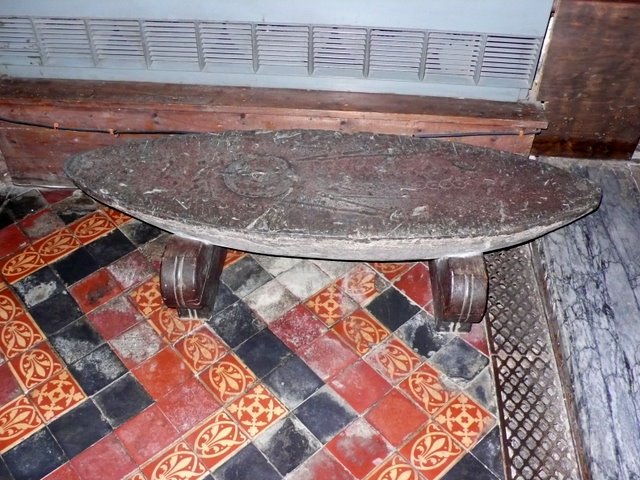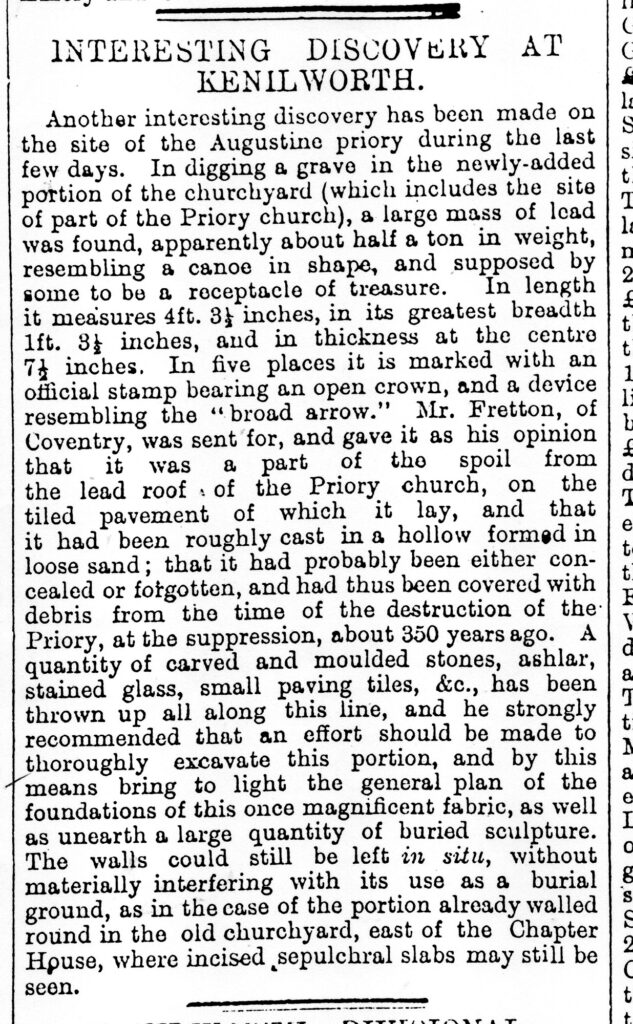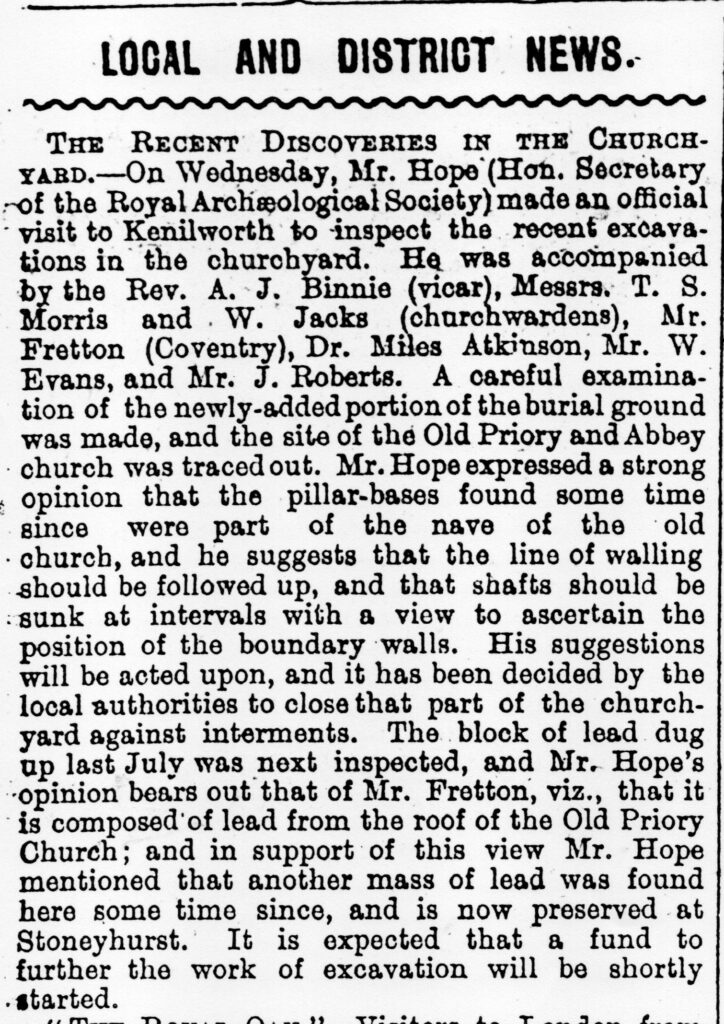1888 – Churchyard Extension
As the grave of Kenilworth builder Edward Smith was being dug alongside the Tantara Gatehouse in April 1886, Abbey remains were found ‘consisting of a chamber with a very fine groined roof with three passages leading out of it, one of them going to the old Monks hole’. It was inevitable that as graves were dug in the most recent churchyard extension, more Abbey relics would be found; when the first grave of 1887 was dug, a skeleton was found ‘the position of which proved conclusively that it was not the remains of a priest’.
In the autumn of 1888, more discoveries were made whilst digging graves in the old part of the churchyard; window jambs, mullions and tracery, stained glass rich in ruby, amber and other colours were found, and they were put in the Tantara Gatehouse. When the foundations of a wall running at right angles to the Gatehouse were found, it was quickly suggested that a full excavation should be made, and public donations were made to pay for it.
On Wednesday 10th April 1889, the Abbey’s church boundary wall with a doorway was uncovered in which were found pieces of tile, one was ‘beautifully ornamented’, and a clay jug which unfortunately broke as it was moved. Another discovery was the canoe-shaped pig of lead, part of the melted down Abbey roof. All the excavations took place within the churchyard.

The pig of lead recovered in the excavations that started in 1888. Photo © Copyright Nigel Mykura Geograph


Two extracts from the Kenilworth Advertiser, 6th July 1889 (left) and 2nd November 1889
Further details about the excavations can be found in my books Victorian Kenilworth & its People and The Abbey Fields
Next or return to Archaeology Home Page